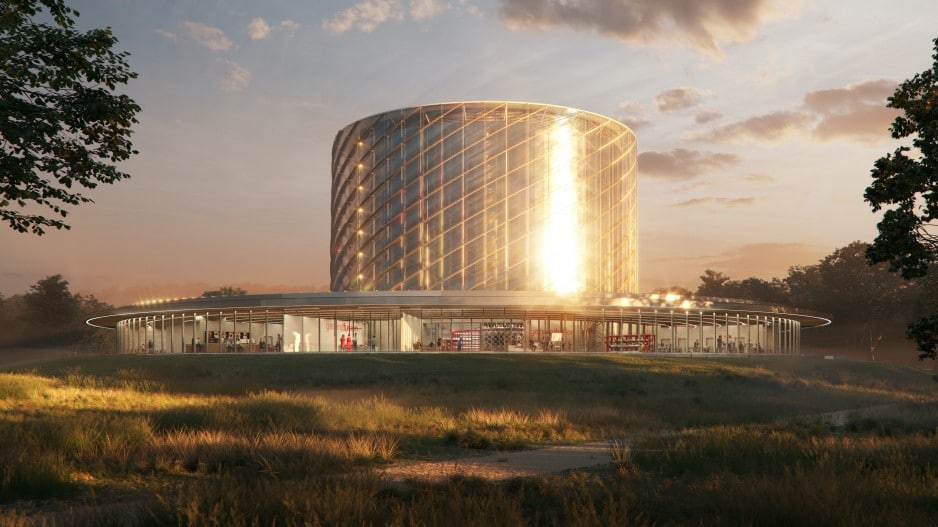
18 Jun 2021 General Fusion draws closer to commercialization, taps U.K. site for demo plant
General Fusion Inc. is taking a hop across the pond as part of its efforts to unlock fusion power on a commercial level.
The Burnaby-based company will be constructing its first-ever demonstration plant at the U.K. Atomic Energy Authority’s Culham campus in southern England.
“This is a game-changer for General Fusion,” CEO Christofer Mowry told BIV.
“We’ve got our feet firmly planted in Vancouver … But it’s also a story about spreading our wings and being a part of the global energy industry in a big way.”
The prototype facility, which is expected to be operational by 2025, needed to be in a location close to an established, globally recognized fusion research centre, according to Mowry.
“We really worked hard to look around. Not only Canada but a bunch of other jurisdictions. But ultimately this was something that was really important to us because this is the thing that’s going to fuel our growth,” he said.
“The investor community and the fusion industry has given us a thumbs-up here in terms of the decision that we made.”
The company has raised “significantly above” US$200 million from investors since its founding and Mowry said more announcements are coming down the pike regarding how much venture capital it will be tapping as it draws closer to commercialization.
General Fusion will also be revealing the site of its new headquarters in Metro Vancouver, perhaps as early as July, for its staff of about 140 workers.
“What we’re looking for is more space, obviously, and a better place to the host the world when they come in and see us,” he said, adding that the company’s headcount has grown by nearly 300% since the end of 2019.
Fusion energy is produced when atoms are fused, kicking out neutrons, which then power a reaction that can generate heat.
It is most often associated as a process that occurs in the sun.
Producing a fusion reaction on Earth first requires turning two elements — deuterium and tritium, which are both heavy hydrogen isotopes — into a plasma.
Unlike fission power, which uses highly radioactive uranium and produces long-lived radioactive waste, the radioactive residuals of fusion power would be short-lived, and there is no risk of runaway meltdowns.
“This [demo plant] opens the door to accelerating the commercialization of this technology that promises to allow societies to reach net-zero carbon in a practical and acceptable way,” Mowry said.
General Fusion’s goal is to have a commercial plant operational by the end of the decade, but it will be relying on the demo plant to prove the viability of fusion power on such a scale.
The U.K. site will be a cylindrical facility with prominent glass corridors that allow visitors to peer at the multi-storey technology capable of producing clean energy.
“That’s kind of the core value proposition of fusion. In that sense of being a pure, clean-energy technology that gets its fuel from water and has an opportunity to kind of reinvent what energy means for society and how society uses it,” Mowry said.
The company had originally planned on selecting a spot by the end of 2020 but the pandemic made that goal more challenging.

The CEO added the commissioning of London-based AL_A (Amanda Levete Architects Ltd.) to help design the prototype facility came about through “serendipity” after he spoke at a conference Singapore.
Mowry told BIV last fall the commissioning of London-based AL_A (Amanda Levete Architects Ltd.) to help design the prototype facility came about through “serendipity” after he spoke at a conference in Singapore.
Mowry recalls his firm’s endeavours “struck a chord” with another speaker, AL_A founder Amanda Levete.
“She invited me to come give a talk in her office in London next time I was [in the U.K.],” he said.
“Her organization was there and they just totally embraced this thing and she said, ‘Hey, I want to be a part of this.’ And that was the start of what has now become a true partnership.”

